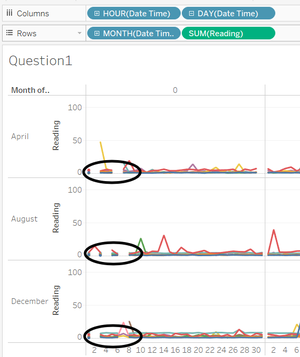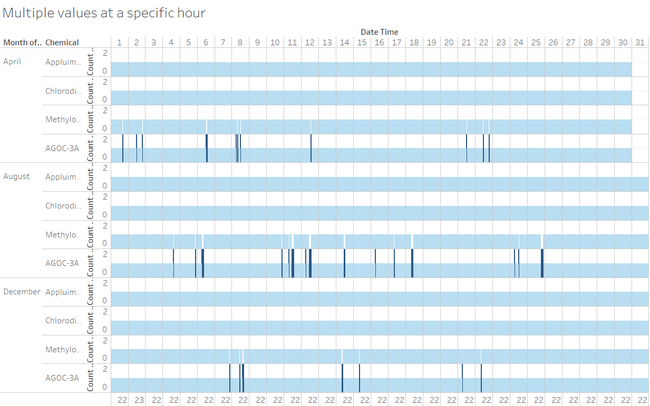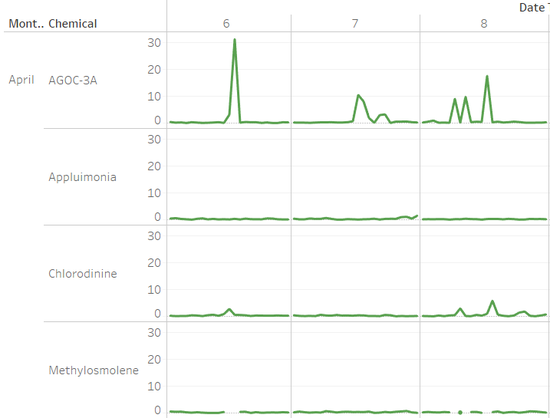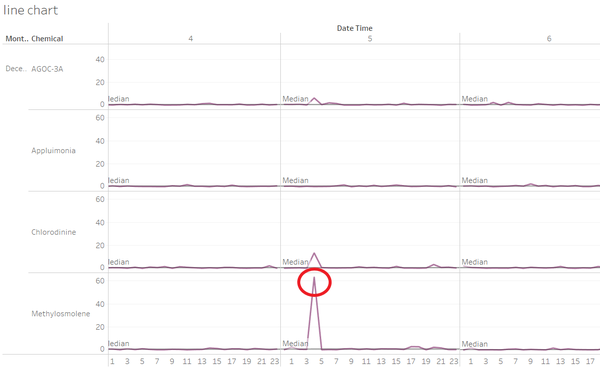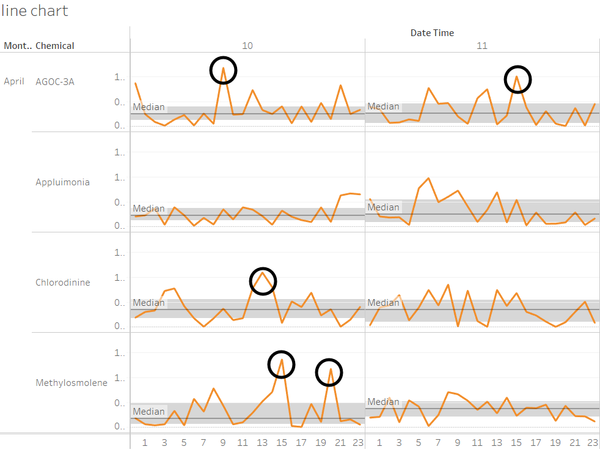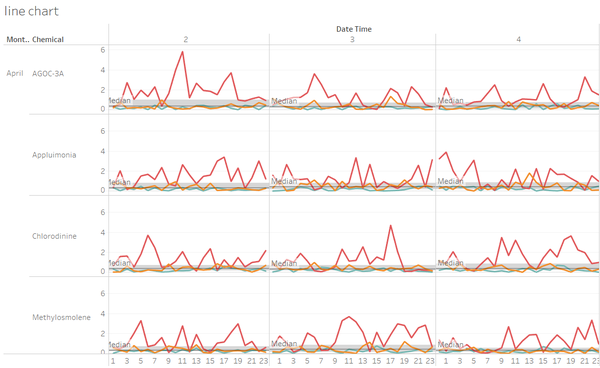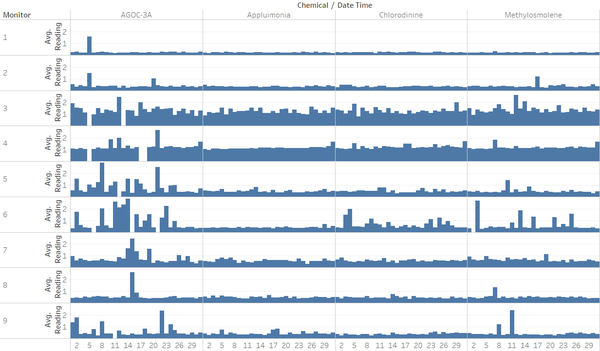Difference between revisions of "ISSS608 2016-17 T3 Assign LIU XINTIAN Questions & Solutions"
| Line 33: | Line 33: | ||
==Question 1== | ==Question 1== | ||
| − | + | ''Characterize the sensors’ performance and operation.'' | |
| − | + | ''Are they all working properly at all times? Can you detect any unexpected behaviours of the sensors through analysing the readings they capture?'' | |
=== Checking Monitors Working Improperly === | === Checking Monitors Working Improperly === | ||
| Line 78: | Line 78: | ||
==Question 2== | ==Question 2== | ||
| − | + | ''Now turn your attention to the chemicals themselves.'' | |
| − | + | ''Which chemicals are being detected by the sensor group? What patterns of chemical releases do you see, as being reported in the data?'' | |
=== Chemicals VS Sensor group === | === Chemicals VS Sensor group === | ||
Revision as of 23:03, 7 July 2017
|
|
|
|
|
|
|
Contents
Question 1
Characterize the sensors’ performance and operation.
Are they all working properly at all times? Can you detect any unexpected behaviours of the sensors through analysing the readings they capture?
Checking Monitors Working Improperly
The line chart on the right shows the reading of four chemicals changed by day in the same hour in three months. Each line represents a sensor. In this way, we can find that there are some missing values at 0:00am in the beginning of these three months. This means all the sensors are not working properly at these specific times. The table below shows the missing value of each sensor, which means they are not working at 0:00am on these days or the sensors may be in maintenance period or some other conditions that cannot work. (work = “Y”, Not work = “N”)
Now, let us see the readings of each chemical (graph Q1_3). All the sensors have a strange thing in detecting “Methylosmolene”. If “AGOC-3A” has a extremly high value, at the same time, the sensor cannot detect the reading of “Methylosmolene”. The graph below is an example of monitor 5, but this phenomenon appears in every sensor in the same condition.
Then, we need to find out why this phenomenon happens. Why these values are extremely high? Is there any possible that at some specific hours, the monitor shows more than one reading?
The bar chart above (graph Q1_4) shows the count of monitor 5 readings in any specific hours. If we lock it into entire view, we can easily find that the range of “CNT(reading)” is 0-2. What’s more, the condition of “CNT(reading)=2” only appears in one chemical---Appluimonia and “CNT(reading)=0” only appears in the other chemical---Methylosmolene. The overlap and the gap are exactly corresponding, which means, monitors wrongly record some value of “Methylosmolene” to “Appluimonia”. These wrong values cannot revise by only changing the chemical name because the value is not right.
The table below shows the information of wrong records of different sensor in three months. (Have wrong records = “×”, Don’t have wrong records = “√”)
Monitor 1 and 2 don’t have wrong records in April, and monitor 7 and 8 don’t have wrong records in August and December. The others have wrong records in all months.
Checking Unexpected Behaviours
A reference line (median with quartiles) is added to show the unexpected readings. We can find that there are four kinds of unexpected readings in the line chart.
First, the readings that extremely high (nearly have a hundredfold value than the others). This phenomenon which caused by wrongly record we have analysed above.
Second, besides the readings in the first condition, there are also have some high values (nearly a hundredfold than others). Let’s show the line chart (graph Q1_6) of monitor 7 in Dec 5th, 4:00 to be an example.
Third, after filter the readings in a small range and excluding the extremely high value readings, we can also find there are readings that out of the range of quartiles (or have ten times around than the others). Let’s show the line chart (graph Q1_7) of monitor 2 in April 10th and April 11th to be an example.
Last but not least, the whole line fluctuates frequently and changes a lot (graph Q1_8). In the example below, monitor 3 is more volatile than the others.
Question 2
Now turn your attention to the chemicals themselves.
Which chemicals are being detected by the sensor group? What patterns of chemical releases do you see, as being reported in the data?
Chemicals VS Sensor group
In the bar chart (graph Q2_1) of monitors and chemical in the whole three months, we can find that monitor 1, 2, 8 and 9 have little reading than the others. Monitor 3 and Monitor 4 detect more readings of 4 kings of chemicals than others. Monitor 5, 6 and 7 detect more “AGOC-3A” than the other chemicals they detect.

